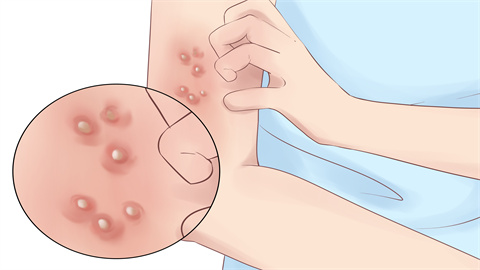How could I get scabies for no reason?
Generally, developing scabies without any apparent reason may be caused by indirect contact with items contaminated by scabies mites, weakened skin barrier function, simple scabies infection, scabies complicated with allergic dermatitis, or scabies complicated with bacterial folliculitis. It is recommended to seek timely medical consultation, identify the specific cause, and undergo symptomatic treatment under a doctor's guidance. Detailed explanations are as follows:

1. Indirect contact with scabies mite-contaminated items: Scabies mites can adhere to items previously used by infected individuals, such as towels, bedding, clothing, and sofas. Contact with these contaminated objects may lead to infection and scabies even without direct skin contact. Immediately boil recently used bedding and clothing in boiling water for more than 15 minutes and expose them to direct sunlight for 4 hours.
2. Weakened skin barrier function: Frequent use of irritating shower products, excessive cleansing, or dry environmental conditions can damage the skin's stratum corneum, making it easier for scabies mites to penetrate and cause infection. This is commonly seen during dry seasons like autumn and winter or among individuals who bathe frequently. Reduce the frequency of bathing and avoid using soap-based shower products.
3. Simple scabies infection: Scabies mites directly burrow into the skin's stratum corneum, secrete toxins, and cause inflammation, presenting as pale red papules with significant itching at night, without other complications. Patients should follow medical advice to apply topical medications such as sulfur ointment, crotamiton cream, or benzyl benzoate cream.
4. Scabies complicated with allergic dermatitis: Skin irritation caused by scabies mites' excrement or an allergic reaction after contact with anti-scabies medications may lead to symptoms such as erythema, blisters, and intensified itching. In addition to continuing anti-scabies treatment, patients can take antiallergic medications such as loratadine tablets, cetirizine hydrochloride tablets, or ebastine tablets as directed by a doctor to alleviate allergic symptoms.
5. Scabies complicated with bacterial folliculitis: Skin damage caused by scratching allows Staphylococcus aureus to invade hair follicles, causing red pustules and mild pain. Patients should take oral antibiotics such as amoxicillin capsules, cefaclor capsules, or roxithromycin dispersible tablets as directed by a doctor to control the infection.
In daily life, maintain good ventilation in the living environment and regularly wash and disinfect bed sheets and covers. Follow a light diet, consume more fresh fruits and vegetables to supplement vitamins, and promote skin recovery through comprehensive care to reduce the risk of scabies recurrence.




